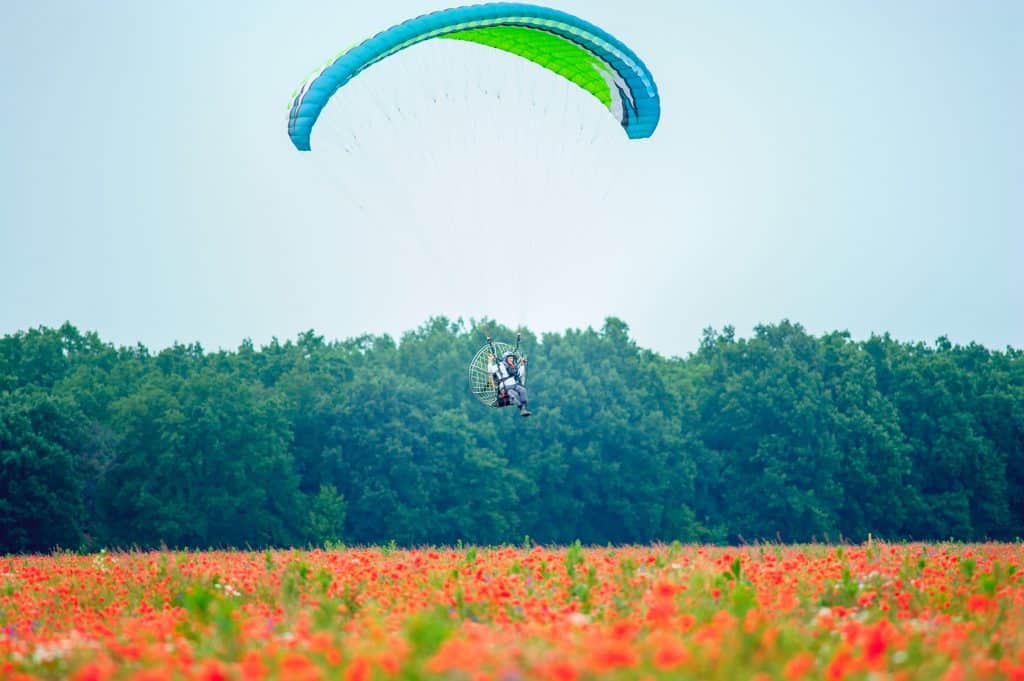
Paramotoring is an aerospace sport. Without wings flight is impossible. You can’t just fly with a paramotor, something is needed to carry it up in the air.
The average cost for a new paramotor wing is about $2800-$4000. The average cost of a second-hand wing is about $1120-1900. Beginner wings are lower in price; the more advanced the pilot/wing, the more expensive the wing will be.
There are a lot of wings on the market and most manufacturers will recommend their wings. I haven’t tried all the wings out there, but I can give you a good idea of a wide range of wings choices and their prices.
Beginner Wings
Beginner wing prices sit around $3100 to about $4000. It all depends on who you buy from. There’s the manufacturer and then there are the dealers. It’s really a matter of preference and being a good searcher for good deals.
It would take forever to provide you with an extensive list of all the wings that are out there. However, I’ve picked out a few good ones. With this list, I feel like you can get a good idea of what the cost would be to get yourself a wing.
All the wings have a link to them so you can easily access the website they are being sold on. This is just for convenience so that you have a lot of variety in one place. The links will also lead you to sites which have other wing options if you don’t like what you see here.
| Wings | Price | Certification |
| Dudek Universal 1.1 | $3500 | EN/LTF B |
| Link 2 | $3550 | DGAC |
| Qubik* | $3750 | DGAC |
| Wasp | $3300 | DGAC EN/LTF-B |
| Boxer 2* | $3185 | DGAC/EN-A |
| Dolpo 3* | $3300 | DGAC/EN-A |
| Ozone Mojo PWR | $3299 | EN-A |
| Roadster 3 | $3650 | EN-B |
| Ozone Spark | Click Here | EN-A |
*Note: These wings can also be used as Intermediate wings.
Beginner wings are for learning and slower flights. They aren’t as easily jerked around as the intermediate/competitive wings. In fact, a lot of pilots who go thermalling use beginner wings.
Beginner wings are great to keep even if you are experienced and want to move on to something newer and more exciting. For instance, I think it’s great to have a thrill, to challenge yourself and to grow your paramotoring skills, but sometimes it’s nice to relax and just enjoy the ride.
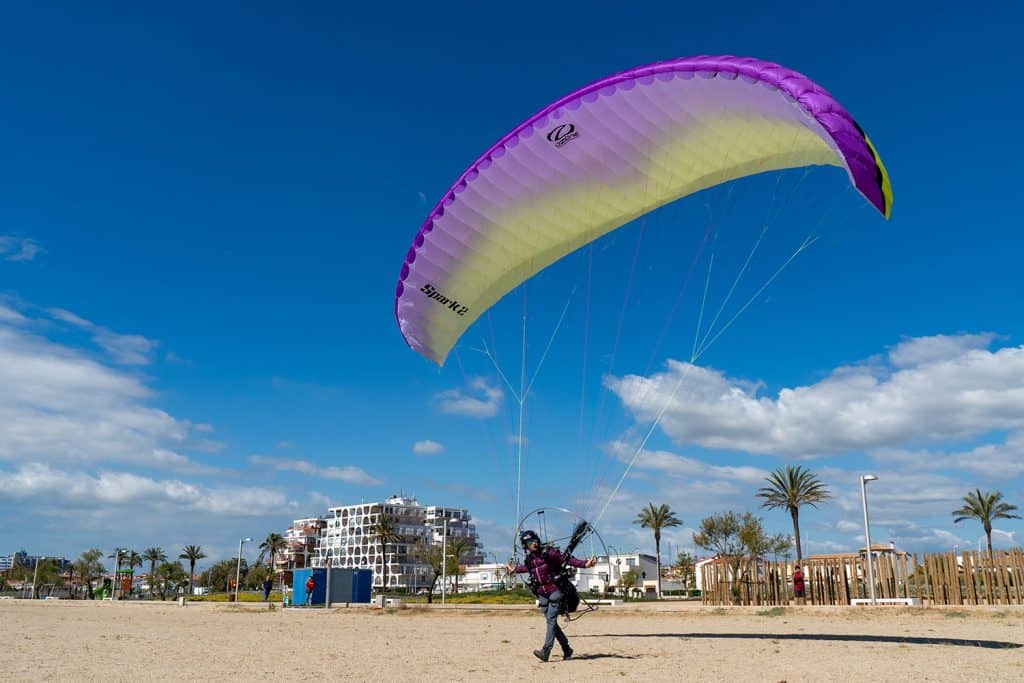
Intermediate Wings
Just like the beginner wings, this list is short compared to what’s out there. The difference between the beginner wing and the intermediate wing is that the more experienced the pilot is, the better he/she will be at controlling/guiding their paramotor.
Intermediate wings are harder to control for the pilot. If you are considering an intermediate wing, then be sure you have the proper amount of flight time and experience necessary to move on.
If you are not sure whether you should move on, then ask your trainer. Most pilots change their motor/wings after about their first 100 hours of flight. If you aren’t quite at a hundred hours but you want to look into what you’ll be getting in the future, that’s good too.
What is it that mom’s say at the store when you are little? “Look, but don’t touch”? In this case, you’ll be able to purchase and touch these wings with your own two hands once you are all ready to move on.
| Wings | Price | Certification |
| Epic** | $3500 | DGAC/EN-B |
| Echo** | $3750 | DGAC/EN-B |
| Billy | $3530 | DGAC |
| Jedi 2 | $3540 | DGAC/EN-B |
| Awak 2 | $3450 | EN-B |
| Piper | $3550 | DGAC |
| Paramania Revo 3 | $3400 | DGAC |
**Note: These wings can also be used as beginner’s wings.
There are some great wings here. Just remember, these prices are for new wings, I haven’t even scratched the surface of second-hand and/or used wings. You could probably cut these prices to about half if you purchase used wing(s).
The nice thing about switching to intermediate (or upgrading wings) is that you are able to still use the old wings. You’ll find that you’re not going to buy just one wing for the rest of your paramotoring life, you’ll have different wings for different activities.
As you learn how to fly better, as you gain more experience, you’ll learn that there are actually various types of paramotor flying.
I mean, the whole reason there are so many different types of wings is because there are so many pilots with varying flight experience and flight preferences.
- Acro
- Thermalling
- Cross Country
- Slalom (Pylon Racing)
- Low level
You’ll expand your flying horizons and you’ll want to experiment with different wing designs and materials to find which ones you prefer to use the best.
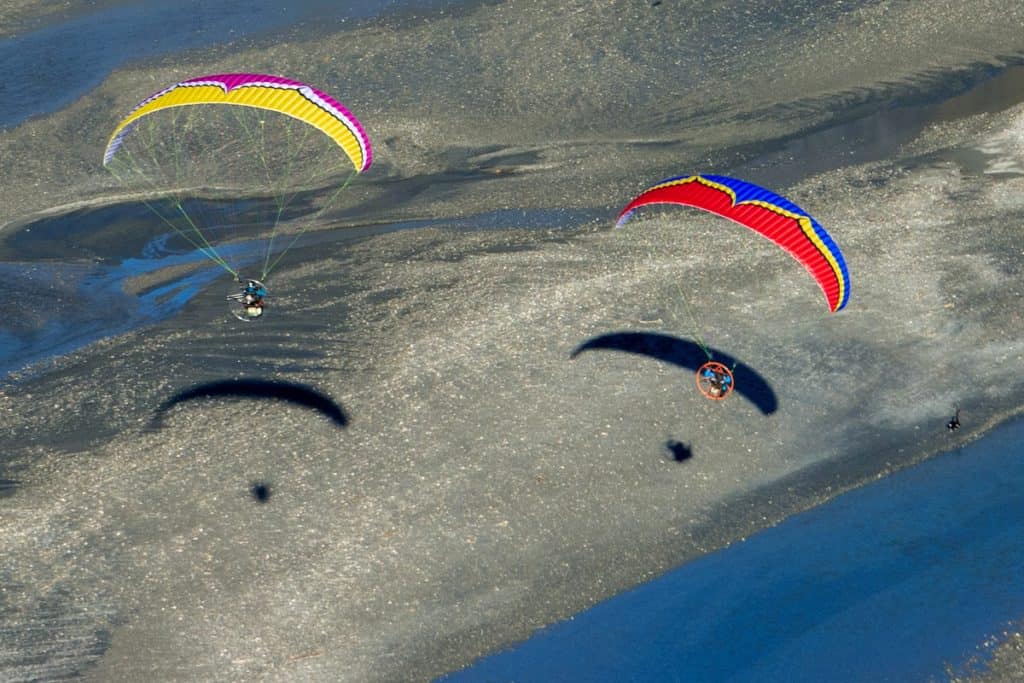
Experienced
To fly with a wing built for experienced flyers you should have logged quite a few hours of flight time. When I say quite a few, I really mean like 100+ hours or more. You shouldn’t be jumping into these wings without the necessary background for it.
| Wings | Price | Certification |
| Kougar 2 | $3850 | DGAC EN |
| Dobermann 2 | $3800 | DGAC EN |
| Luna 2 | $3550 | DGAC |
Fun Fact: William Shatner is a paramotor pilot. He wrote a book to promote paramotoring because of the great experience he’s had during his flights.
Competitive Wings
Competitive wings are built for speed and agility. You’ve got to be prepared and trained for these wings. Risk of injury is likely if you’re a dummy and go up in the sky to take flight without working up to this type of wing.
Training and experience is everything in paramotoring. You may not thinkm that you need a trainer, but you do. Besides, trainers will giv eyou all types of awesome tips and tricks to make your flight much more enjoyable and easy.
If you’re prone to anxiety- and even if you’re not- think of the anxiety kyou would get in the air if you hadn’t trained or practiced beforehand what to do in an emergecy situation.
True, you have to mess up at some point (and you probably shouldn’t fly if you are prone to serious anxiety), but we’re talking about probability here. It’s lower with training, experience, and practice- that’s just a given.
| Wings | Price | Certification |
| Freeride | Click Here* | DGAC |
| Viper 4 | Click Here* | DGAC |
| Speedster 2 | Click Here* | EN C |
*Note: These wings require you to seek out a dealer nearby and call in to request pricing.
Reflex Wings
Reflex wings are often also competition wings. They are built to be faster than regular wings and can turn sharper. Some pilots even consider them to be safer than regular wings (only after you’ve learned how to use them).
Here are some popular reflex wings with their prices:
| Wing | Price | Certification |
| GT | $2,450 | EN-C |
| Synthesis 2 | $3,550 – $3,950 | DGAC |
| Paramania Fusion | $1,325 | |
| Hadron XX | $3,500 | DGAC |
| Viper 4 | $4,250 – $4,400 | DGAC |
What makes these wings faster is their shape. How they are shaped allows them to take turns at a low altitude angle. Possibility of collapse is also decreased.
The same guidelines for safe flight should still be observed and considered, but it’s more likely that your wing will stay inflated with reflex wings.
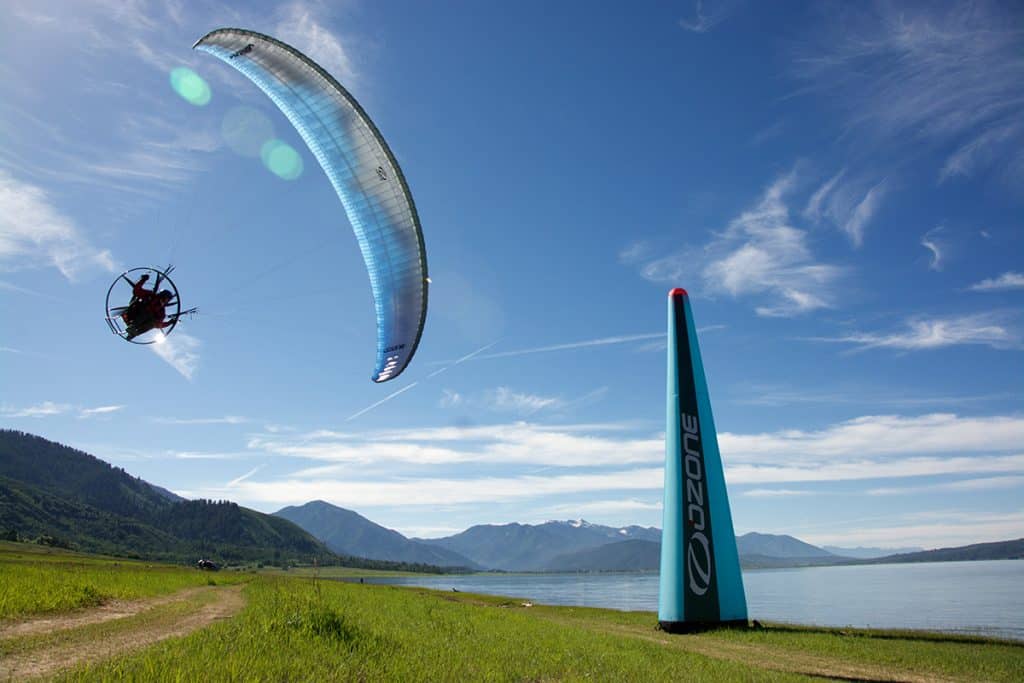
Tandem
Wings specifically made for tandem flight are generally more expensive because they are carrying much more weight; the wing has to be strong enough to handle that weight. The material is not the same as beginner wings, competitive wings, etc.
| Wing | Price | Certification |
| R-Bus | $4400 | DGAC EN |
| Dual | $4500 | DGAC EN/LTF-B |
| Dual Lite | $4800 | DGAC EN/LTF-B |
| Bulldog | $4050 | DGAC |
| Magmax 2 | Click Here | EN-B/DGAC |
| Triox | Click Here | DGAC |
Note: Wing pricing may also fluctuate due to wing sizings. Wings don’t usually have a “one size fits all” option; that’s not how they are made.
Tandem wings are generally faster than regular wings. They have greater durability and longevity because of how they are made.
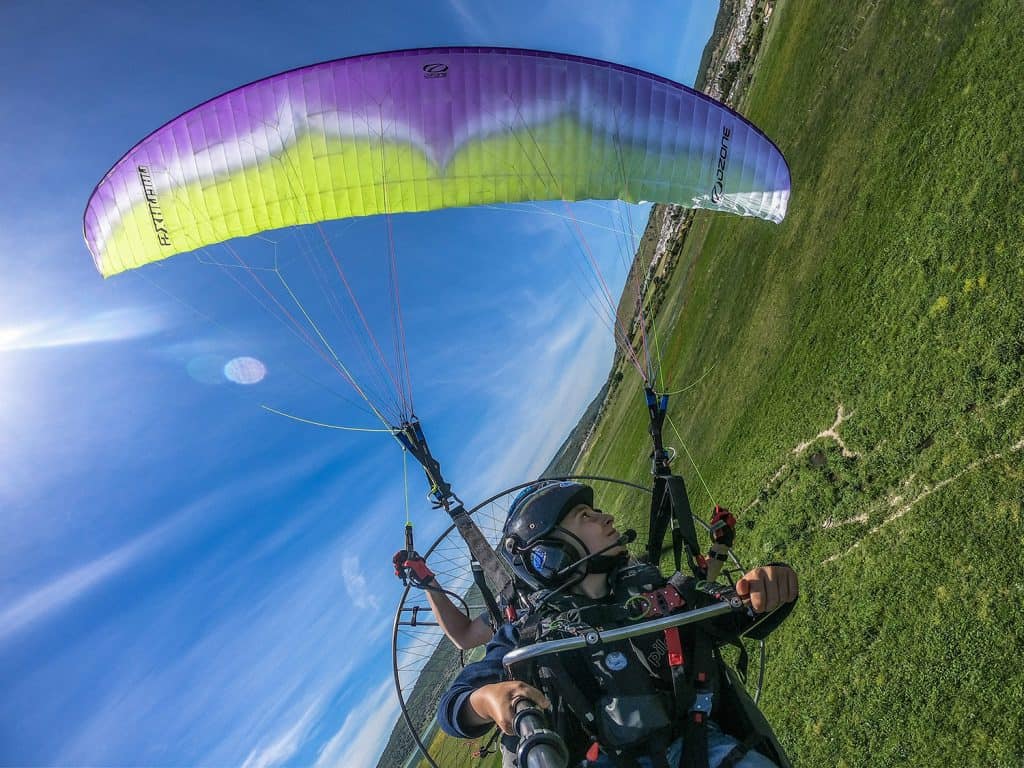
Consider Weight Capacity When You Purchase Your Wing
Something to consider when purchasing your wing- since we’re talking about wing durability and weight capacity- is to take into account your weight. Click here for an article that dives deeper into how your weight can affect your flight.
These are all great wings, but don’t forget that the one you purchase needs to be appropriately fitting to your weight. Not all manufacturing companies like to label the size of their wings the same. It’s frustrating, but it’s the truth.
Most charts stick to kilograms as their weight measurements. The wings usually range from XS-XXL. However, this can be displayed through numbers or a letter sizing chart, it just depends.
It can be rather confusing to choose a wing because of this as it is not clear. My advice, have your trainer help you or ignore the sizes and focus on the weight capacity. Don’t worry about the way they organize their sizing, it’ll just frustrtate and confuse you to no end.
The only thing you need to pay attention to is the kilograms and then once you know, then you’ll know what size to purchase. It’s really only when you’re about to purchase that the size will really matter, so don’t let it confuse you.
A Note About Purchasing a Used Wing
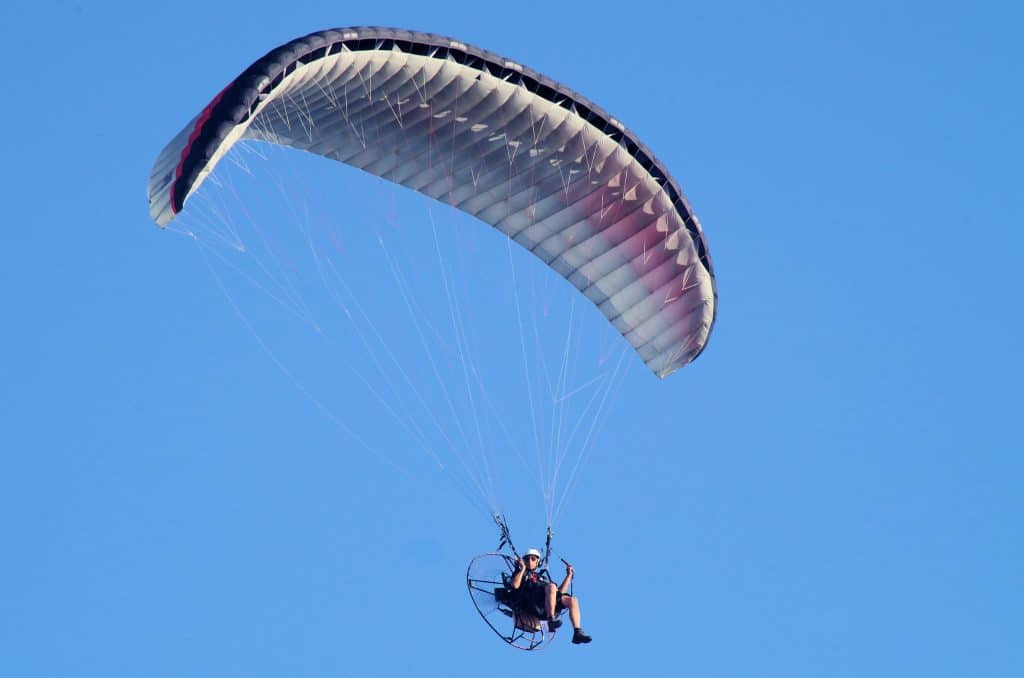
Purchasing used wings can be very tricky and it is easy to be scammed and/or taken advantage of. My advice, it’s better to purchase new wings. I’d only do that for peace of mind because I’m more sure of what I’m getting.
However, I completely understand the desire to purchase used. I’m a penny saver too, so I get it. There are some really dirty people out there who just want your money and don’t care about your safety at all.
You could spend a ton of money and realize that your wing was poorly manufactured, in which case, buying used can minimize the frustration and buyer’s remorse which can happen.
Don’t get me wrong, sometimes you can get really great deals and walk away with a satisfiable wing, but it’s always better to be cautious.
If you’re going to purchase a used wing, the process for purchase is going to be longer. It’s true that the wings are going to be about half the price if your search is fruitful, but you have to be willing to put in the effort.
Here are some tips and things to avoid moving forward with your search:
- Appropriate technology at your level- Look for wings that are the most recent in technology and are at your level. If you are a beginner, don’t purchase an expert level wing.
- Review the test report*- All wings come with a test report. Even if the wing hasn’t had a lot of flight time, you should still look at the report. It really is just a standard procedure when purchasing.
- Check the wing yourself- Someone could easily give you a test report that is totally bogus. A test report is a piece paper and could have all the information needed, saying that the wing is completely safe and tested, but don’t just believe the paper or the dealer! Look at the wing with your own two eyes and make sure there is nothing wrong with it. If you are unsure what to look for, bring someone with you who does.
- Ground handle- If at all possible, find a clear spot of ground large enough to check how well it gets up in the air. Don’t just trust what the dealer says to you. You should know how it feels anyway before you buy it, so if you can, get it in the air and test it out.
*Test Report Tips:
As a wing ages, it will go through a series of inspections because the material wears out and sometimes needs to be replaced. If a dealer doesn’t have a test report for the wing you’re interested in, don’t trust them.
Here are the pieces of the wing which will be checked for wear and tear:
- Material– Porosity test. When the material gets old it thins and does not perform as well.
- Lines- Broken lines, strength test, etc. They need to see whether the line is broken and/or can still hold the same amount of weight limit as when it was manufactured.
- General Check- Holes, tears, blown stitching, broken cell stiffeners, etc. This is just a visual check to find the small things.
- Risers– tearing, weight limit check, etc.
Here are some old wings you should avoid:
- Edel Power Atlas
- Fresh Breeze Silex
- PowerPlay Sting
It’s not likely you are going to run across these wings, but you should keep in mind their names in case someone tries to sell you an outdated wing. Just be aware.
List of Credible Wing/Paramotor Manufacturers:
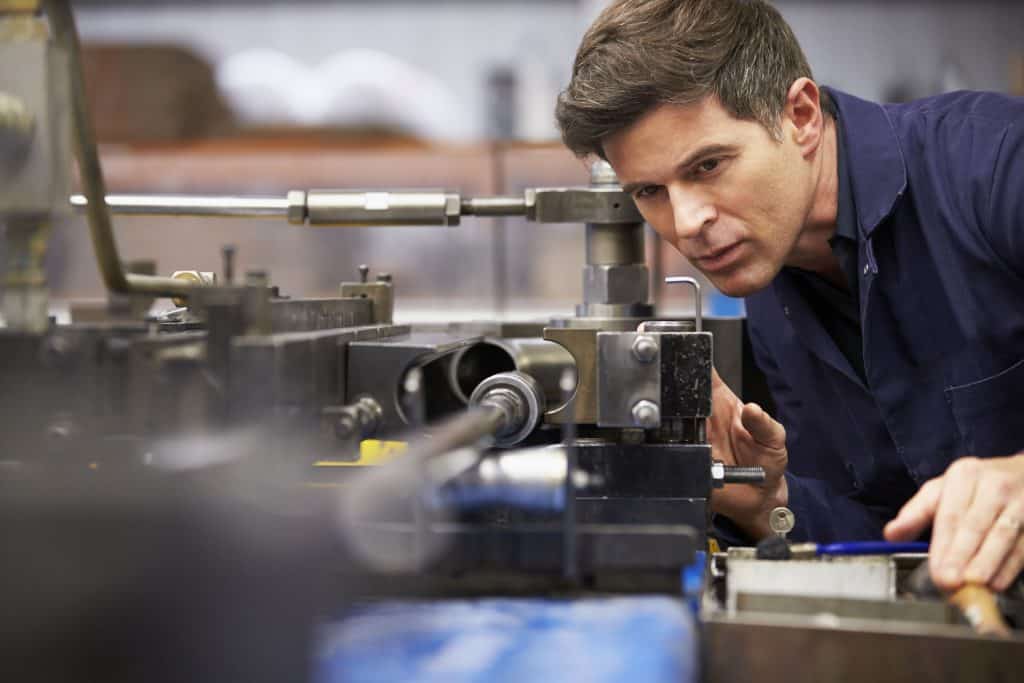
All of these manufacturers were pulled from a list of tested and certified wings from paratest.com.
- Triple Seven
- Advance
- Adventure Paramotors
- Aertact
- Aircross
- Airdesign
- Air Vuisa
- APCO
- Axis
- Bruce Goldsmith Design
- Flow paragliders
- Davinci Gliders
- Dudek paragliders
- Ozone
- Gin
- Gradient
- high adventure creative Pilots
- Icaro Paragliders
- Impuls Paramotor
- Independence Paragliding
- Niviuk
- Supair
- Swing
- Turn
- WoodyValley
Note: A manufacturer which is quite popular that was not mentioned on this site is SCOUT paramotors. Their wings and paramotors are excellent and are of great quality.
The bolded manufacturers are a few of the more well-known and/or popular manufacturers. Most manufacturing websites will redirect you to a dealer near you for purchasing or they’ll have you call in for their pricing.
Compare Wing Pricing
Don’t be afraid to do some comparison pricing. Even if it takes you longer to find a paramotor wing, you’ll be happy with your purchase if you compare. Paramotoring is worth the money, but who doesn’t want to get a deal or a few dollars off here and there?
To give you an idea what I mean, here are some tactics businesses use to with pricing:
- Pricing at a Premium- Businesses will raise their prices to make you think a product is higher quality. This isn’t always the case.
- Market Penetration Pricing- This one you’ll be very familiar with; and that’s lowering prices to attract people to buy. This isn’t a bad strategy for the consumer, but the company can sometimes suffer.
- Price Skimming– This is when a company sets higher prices at the beginning of the entrance of the product into this cruel world. They then lower the price later as competitor goods enter the market. This will happen with a lot of newer wings, so watch out for this.
- Psychology Pricing- This is basically getting the consumer to purchase a product based on emotions rather than logic. Paramotoring is amazing and it would be silly for manufacturers in this sport not to use this tactic to sell more. However, beware you don’t fall into this trap.
- Bundle Pricing- affects the value perception of the consumer and paramotor manufacturers do this often. There is a lot of equipment needed for paramotoring, so bundling can happen often.
Note: Some companies also let you choose different backpacks and covers for your wings
Even though many of these strategies are used to influence the price for paramotor wings, certain prices can only go down so far. For example, the materials and labor prices for your wing are likely calculated into the cost and are non-negotiable.
Not only that, but the company needs to make money from your purchase as well and that will be tacked onto the price. If you think about it, it’s worth buying a more expensive wing so long as it’s dang safe and is going to make your flight extra magical.
Other than that, you’ll probably be able to find something for a pretty low price if you do some comparing.
Note: If you have no problem buying used wings then labor and material price won’t matter and that’s a plus.
A Bit About Wing Certification
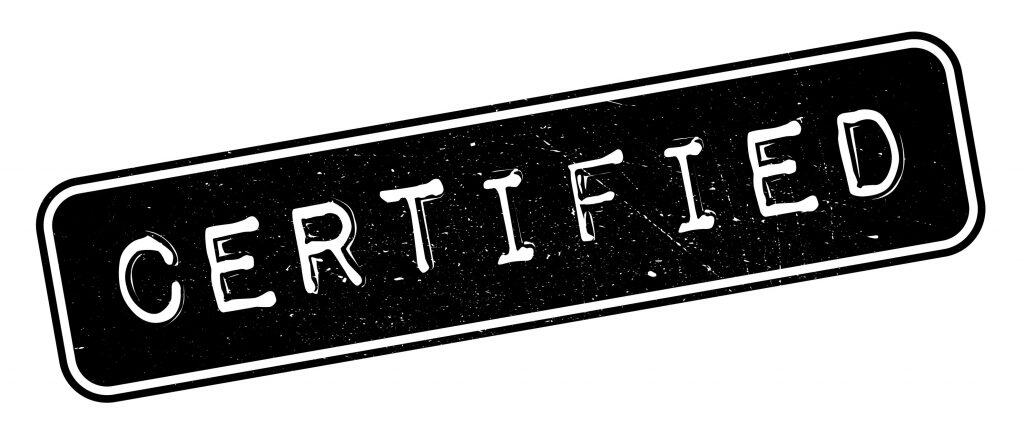
You may have noticed the “certification” column in the above tables. This indicates the type of safety tests gone through for each wing. Safety tests are not required, but they are advised. If you are going to purchase wings, you want them to be at least EN-A certified.
If you’ve purchased a wing and want to see the reports for wing safety, just go to this website.
You may be wondering what type of tests are done. What are they protecting you from? What are wings designed to do besides get you up in the air and let you fly? Well, as mentioned before, you aren’t just flying.
You may be thermalling, racing, or going cross country. Wings which have passed certification have been tested in the very conditions you might encounter while thermalling, acro flying, racing, etc.
To get more specific about the types of tests, here is a list of some wing tests:
- Harness efficiency
- Turning capabilities and behavior
- Landing and takeoff safety
- Steady/turbulent flight behavior
If your wing hasn’t had these tests, it’s not safe to fly and you should not purchase it. Your safety is the most important thing when you fly and passed certification can give you that peace of mind when you fly.
It’s also nice to have that differentiation between experience levels. It would be pretty annoying to have to purchase and try out so many wings to eventually figure out which was the best for you; not to mention the fact that getting an expert wing and trying it out might take your life. Yup, you want your wing to be certified.
DHV
DHV is certification done by the French Civil Aviation Authority. The tests are a bit different, but the fact is, this acronym shows that the wing has been through the necessary channels to make it airworthy.
EN A/B/C/D
EN certification has levels. Whether your wing is an A, B, C, or D level, it passes inspection and is safe enough to fly.
- EN A– this level is suitable for all pilots and has the safest/maximum level of air safety. This level of certification is the best choice for paramotor wings because you can’t go wrong. They have the most steady flight reputation than the lower levels.
- EN B- Good flight, but not as stable as the EN-A certified wings. To be honest, though, these aren’t too different from EN-A certified wings.
- EN C- The safety level of these wings are moderate and should be used by pilots with more experience. They are more prone to be whipped around by turbulence and require the pilot to be more aware and capable than the A or B certified wings.
- EN D- This is for the enthusiast who flies all the time. This certification should not be purchased by anyone who is not an experienced paramotor pilot. What does it mean to be an experienced pilot? It means that you fly 200+ hours a year and you know specific and special techniques for flying.
DGAC (LTF)
More presently known as LTF certification, DGAC follows a very similar pattern to EN-A certification. The only difference between the two is that numbers are used for LTF rather than letters. Each wing is ranked by the level of difficulty; which is based on the pilot’s flight experience.
1: Beginner- It works for all pilots and is the safest to fly and is what they call very forgiving.
1-2: Beginner to Intermediate- Those who will use these wings are still pretty fresh, but are beginning to gain a bit more experience.
2: Experienced- The higher up you move, the more dangerous these wings become, but you’re also more familiar with flight technique and flight safety.
2-3: Experienced to Expert- You should be a pretty regular pilot to fly the experienced to expert wings. They are not very forgiving and have some tough consequences if a pilot makes a mistake.
3: Expert- At this level, you basically live in the air and fly all the time. It’s probably what you do for a living (in my opinion). Careful with these certified wings as they are not very forgiving either and you should only purchase them if you are willing to accept the consequences in the case of pilot error.
